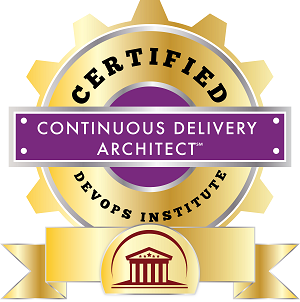
Continuous Delivery Architecture, A Rainbow of Tools
The Age of Architecture
Architecture is one of those universal roles that no matter the job, its critical you have a good understanding of the architecture to be successful in both development and operations. As with any architectural role, there are so many moving parts that if you can’t see the machine for the cog you’ll never be able to master your craft. The problem seems that because of the siloed nature of business no one but those in architecture get the lay of the land, it is in this challenge, Continuous Delivery Architecture was created to help ALL practitioners understand not only the big picture but the why and how every component is vital to success.
What’s In The Toolbox
To help you get an idea of the sheer quantity of tools that will be at your disposal I’ll give you the highlights reel. It starts with what we call a collective body of knowledge. This is a collection of materials (books, blogs, websites, etc.) to help you on your journey to learn. Then comes a bevy of concepts from DevOps to Continuous Delivery to help drive some common language. We’ll kick things off on the strategic track to ensure we have a unified vision and goals. See what we did there? We’ll cover topics such as pipelines, the seven pillars, culture, strategy, approaches, and roles. Then we blend strategic and tactical considerations to ensure we have the right process wrapped around everything and some principles and methods we can apply to measure the effectiveness of your execution. You’ll see topics such as ChatOps, Retrospectives, Change Management, Pitfalls, Branching and Merging, Design Patterns, Microservices, Containers, CI/CD, Gating, Database, Scaling, Monitoring, Testing Strategies, Automation, Orchestration, Chaos Engineering, Release Strategies, and so much more. We walk you through every consideration from planning to production delivery and everything in between. Finally, we ask the important questions along the way, and leverage practical application to reinforce learning with exercises and capstone projects. In the next few minutes, I’ll attempt to elucidate in some of these areas.
Learning About The Usual Suspects
DevOps teaches us that we should strive to always create a culture of collaboration and trust in every activity. This often starts with understanding each other’s roles and challenges. A critical step in this is to start with a foundational understanding of all the practices at work in your organization. You know what approaches I’m talking about, Waterfall, Agile, ITIL, DevOps, Lean, and many others. When we understand the powers at work in our organization, we understand how we complement each other’s capabilities. Yes, even Waterfall can have a place in the organization. You’ll learn more around these roles and how they can interact and why they generally don’t work. The key here is to bring value to any approach.
Continuous Delivery Culture
Seven distinct pillars will outline the components in your journey to create a continuous delivery culture. Each will not only add value to the overall structure but provides multiplicative returns with their application in concert with each other. They are a lot like Power Rangers, pretty awesome by themselves but when you combine them, WOW! This course will cover each pillar in detail as well as guide you through the questions you’ll need to ask so you can integrate them into your current processes. The big takeaways here are how you can complement and enhance current operations, this will help you build towards a more successful transformation.
Back It Up With Best Practices
One of my favorite things about all ITSM Academy courses is that they focus on making sure we have best practices outlined and we show you how to execute what you’ve learned. It made such a difference for me in my career, it’s the reason I became an instructor for them. The best part is that those best practices are a combination of not only industry standards but tried and true methods from actual practitioners so you know what your learning will already resonate and be impactful in your organization. They even cover the wrong ways to do things so you will notice negative patterns and how to stop them before they take hold. Then we fold adoption challenges and quick wins into the equation so that you know what your getting into and how to effectively execute with a clear path to success. One last benefit I’ll mention which is invaluable is that in every class there is a mix of other practitioners. This means you’ll get the added benefit of thought diversity of others who may have the same questions or have overcome some of the challenges you have or will face so you’ll get genuine experiences, not just theory. That alone has been worth its weight in gold.
Double CDA Rainbow, What Does It Mean?
The breadth and depth of the content with Continuous Delivery Architecture is substantial. If you could only take one course after your DevOps foundation course, let it be this course. It will give you an end to end overview of the entire process and dive into each and every component that makes up continuous delivery. This course will give you the greatest bang for your buck. Architects, developers, engineers, and leaders alike will find this course a comprehensive and significant bolstering to their current skill set and will bring them up to speed on seeing the entire picture and how each part contributes to it’s operation. After all isn’t that one of your greatest challenges already?
